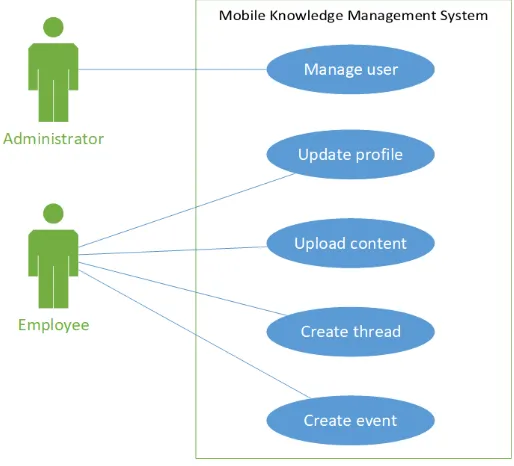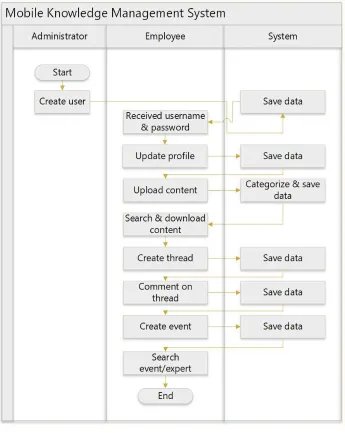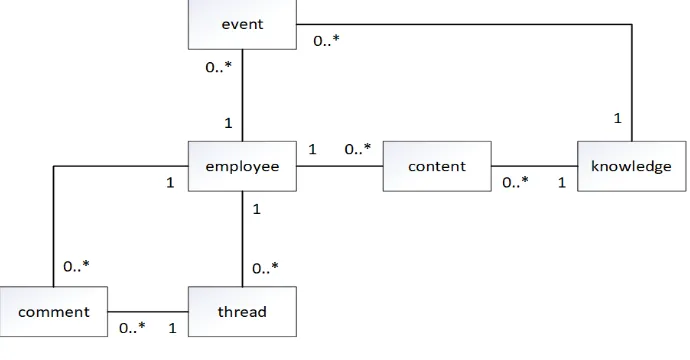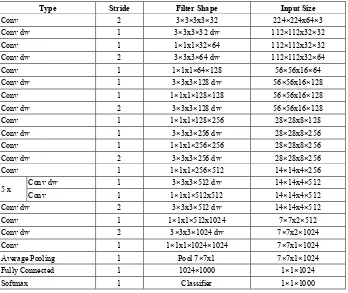Utilizing Mobile-based Deep Learning Model for
Managing Video in Knowledge Management System
https://doi.org/10.3991/ijim.v12i6.8563
Harjanto Prabowo, Tjeng Wawan Cenggoro, Arif Budiarto, Anzaludin Samsinga Perbangsa, Hery Harjono Muljo, Bens Pardamean
Bina Nusantara University, Jakarta, Indonesia
Abstract—Knowledge Management (KM) system is a core feature in facilitating intellectual growth in organization. However, there are numerous difficulties in maintaining a reliable KM system. One of the challenges is to manage knowledge materials in video format. A video file contains complex data that lead to the difficulties in managing them. Without an intelligent system, managing videos for KM requires a laborious effort. In this paper, an intelligent framework for KM system, embedded with deep learning model, is proposed. The use of the deep learning model alleviates the heavy burden of video materials management in KM system. To enhance the agility of the system, mobile-based deep learning model is utilized in the framework.
Keywords—deep learning, knowledge management, video classification, mobile-based
1
Introduction
As a discipline, Knowledge Management (KM) provides a framework to efficiently manage and make use of knowledge within organization. KM focuses on managing knowledge contents so that they can deliver useful information to organization. How-ever, knowledge for organizations or individuals cannot be managed with a single tech-nology, but requires technology equipped with Artificial Intelligence (AI) facilities to run it and to achieve maximum results [1]. For instance, managing knowledge in video format require extraction of underlying information in the video itself. By automating the extraction process with AI, the needs of human to infer the information in videos can be reduced, which in turns speed up processes of managing knowledge in video format.
To further accelerate processes in KM, the use of mobile technologies can also be integrated within the framework. Infusing mobile technologies in a KM system enables knowledge workers to interact with the system without constrained by time and location [2]. This leads to a better agility in the overall KM framework.
particularly in managing video content. The type of AI used in the design is deep learn-ing [3], which is the state-of-the-art technique for video analysis [4].
2
Knowledge management
Knowledge management (KM) is a subject area which has potential to open new paradigm in organization. The implementation of KM is relevant in industrial environment due to its capability in increasing organization performance, so that it can be considered as a highly-valued asset for management [5]. KM is an essential factor for organization strength and sustainability [6]. KM also provides organization with strategy to increase profit, competitiveness, and capacity [7][8].
KM allows organization to exploit its human intellectual asset to improve competitive advantage. KM also plays a critical role in immersing new business process design, mapping cultivated knowledge, and utilizing business intelligence to fulfil organization needs. In addition, KM is also aligned with the goals of capturing, sharing and reusing knowledge within an organisation or among organisations [9].
The benefit of KM is not only limited to organization in high-technology industry, but also to organization mainly engaged in economy, education, banking, telecommu-nication, manufacture, and public sector [10][11]. Therefore, KM can be considered as the main driving force of organization performance [12]. More interestingly, KM can also be considered as a vital resource for organization viability and prosperity [13][14].
3
Deep learning for video classification
The growth of Internet use nowadays has generated a massive amount of data in the form of multimedia content, especially in video content. This trend has motivated the development of AI techniques to extract useful information from video content [15]. One of the most practical application of AI in information extraction from video is video classification. Video classification is a problem where the goal is to categorize videos into separate labels which semantically have meanings to human. This particular application has been deployed in managing a massive amount of video data [16].
input gives temporal information to the vanilla 3D CNN, thus tends to work better than normal 3D CNN.
4
Related works
The implementation of artificial intelligence (AI) to support knowledge management (KM) has been explored by scientists for more than a decade. One of the main reasons behind this relationship is because both of these computer science’s subsets employee the same concepts called knowledge base and ontology [31]. Knowledge base is the main component of KM that contains all information or knowledge shared in a community or organization. Akin to that concept, AI also has knowledge base as the main data source that can enrich the model to solve particular problem. Whilst, ontology is an important part for KM and AI to understand every entity from the knowledge base. Without an ontology, users of knowledge management system (KMS) will find it difficult to understand some parts of the knowledge that relatively new for them. Ontology in AI is used differently. It is used to ensure a computer to understand any kind of input data with in a such way that it can have the same understanding with human.
In 2001, Liebowitz has already noticed that AI was the building block in KM development and advancement [32]. This issue had been there because of the fact that knowledge management system was no more than an information or document management product. The absence of AI in this so-called KM, at that time, was the main reason why there were a lot of doubts for managerial levels to adopt KM in their organizations. Liebowitz clearly states that AI supports KM in every aspects ranging from knowledge sharing, individual to collective and organizational knowledge transformation, and end up in the reincarnating from organizations into knowledge organizations. Furthermore, Liebowitz also mentioned two important parts of AI that can be applied in KM. The first one is the knowledge acquisition technique that can be applied in KM to build knowledge repository. The second one is Intelligent Agent technique that can be used to store and retrieval method in KM system [33].
process all knowledges so that it can enrich users in the decision making process using one specifically AI application called expert system [32].
AI has been applied to support KM in several domains. One of them is knowledge management for health or biomedical domain. One main reason why knowledge management is very important in this domain is because the massive amount of data involved. Holzinger and Jurisica (2014) highlighted this important point by stating that one big challenge in biomedical research is the data overload [36]. They proposed an effective solution as the knowledge discovery and data mining in their research. This interactive solution help users to manage large and unstructured data as well as to optimize the overall pipeline and workflow. They implemented a combination approach between Human Computer Interaction and Knowledge Discovery & Data Mining (HCI-KDD) in building their solution [37].
Education institutions also experience a similar thing with biomedical researchers. They have to deal with large amount data related to the knowledge itself and also other data such as students, lecturers, and staffs. A comprehensive study has been introduced by Lara et al 2014 to investigate the best approach to build knowledge discovery system for Open University of Madrid, UDIMA [38]. Their main consideration in building the solution was the ability of the students to reconcile between their desire to study and their job and family responsibilities. E-learning approach was believed to be the best answer for that problem. Consequently, the complexity of data and information in this particularly case become more complicated. Began with that problem, Lara et al developed an effective tool to help lecturers in transferring the knowledges. They used a basic Virtual Learning Environment (VLE) called Moodle [39]. Based on this VLE they developed a knowledge discovery and data mining model that can be applied in Moodle platform. Historical and participative data were the basis of analysis in the proposed model. At the end, the model can be used to predict students’ grade, detect students’ behaviour, advice lecturers with all information about the class, and build a tool for student modeling.
The research of AI integration to KM so far utilized AI techniques which fall to either expert system or data mining category. While deep learning has been known as state-of-the-art technique in almost all AI tasks, there is no research that incorporates deep learning in KM to the best of our knowledge.
5
Research methodology
This study used unified modeling language (UML) as a standard set of notations for system modeling. UML provides Use case diagrams, activity diagrams, and class diagrams that can be used to model structure and behavior systems. The use case dia-gram is used to determine user role group and what features will be used in the system. The activity diagram describes the workflow of user and system. And finally the class diagram will be used to describes the class of a collection of similar objects and relationships between classes.
robust system that invloves videos as the data input [16][22][25][40]. For the sake of mobility, this deep learning method is implemented in mobile technology by using a light CNN model for mobile called as MobileNet [41]. The architecture of MobileNet can be conveniently adjusted to fit in mobile device, yet has a comparable performance to VGGNet [42] and AlexNet [17], two of the most highly performed CNN models for computer vision.
MobileNet utilizes the concept of Depthwise Separable Convolution (DSC) in its architecture. This concept is originally developed in 2014 by Sifre [43] and formulated for use in CNN by Chollet in 2016 [44]. DSC works by using parallel modules of stacked convolutional layers, which are pooled in the end to form a single output channel. MobileNet introduce a parameter 𝛼𝛼 which controls the number of parallel modules in DSC. By controlling 𝛼𝛼, MobileNet can be squeezed to fit in mobile hardware by sacrificing only a little accuracy.
For the development and deployment of MobileNet model, Tensorflow framework [45] is utilized. Specifically, the version of Tensorflow utilized is Tensorflow Lite, the version optimized for mobile. The use of Tensorflow Lite allows a dramatic acceleration to develop Deep Learning based application in mobile, because this framework can be coded and tested directly in a mobile device.
6
Results and discussion
The functional requirement of Mobile KMS is presented in the use case diagram as shown in Figure 1.
The administrator is responsible for managing user data and granting the appropriate user’s access role in the system. Administrators are also responsible for updating application-related information to users. Employees as an expert can share their knowledge by uploading learning materials including video contents. Knowledge dissemination can also be done by creating threads in the discussion forum feature. Based on the use case diagram, an activity diagram was created in Figure 2 that describing the mobile KMS workflow.
To be able to use the system, employees must be enrolled first by the administrator. When employees are able to access entry into the system, can manage the profile and change the password for security. Employees as an expert can upload learning materials, including videos that will automatically be categorized by the system using deep learning. Employees who need knowledge can search and download content based on categories that have been compiled by the system with deep learning. After learning the content, employees can also improve and share knowledge through discussion forums. Employees can also share information about an activity related to certain knowledge such as training, workshops, and seminars through event features. The relationships between classes are shown in Figure 3.
Fig. 3. Class Diagram
The class diagram consists of six classes, namely employee, knowledge, thread, event, content, and comment. Attributes in the employee class are biodata, login access, and role in the system. Class knowledge contains attribute categories and inheritance attribute to the parent knowledge. The thread class contains the topic attribute in the discussion forum. Content contains shared knowledge file attribute. And the class comment contains the attribute of the question/opinion/suggestion in the discussion forum.
Type column in Table 1 means convolutional layer, dw means DSC layer, and dw in Filter Shape column means number of parallel convolutional layers for DSC layer.
The strategy of using raw RGB input is chosen because it is the most efficient strategy to be implemented in mobile device. For comparison, the state-of-the-art video analysis strategy use auxiliary optical flow input to enhance its accuracy [4]. The additional optical flow input introduces extra computations for calculating the optical flow, while can only increase the accuracy by 2.4% [4]. The other common video analysis strategy which utilizes LSTM layer is also not an appropriate option. Computing both CNN and LSTM as one model is an intense operation which should be avoided for implementation in mobile device. Moreover, the state-of-the-art technique using LSTM can only achieve performance lower than the chosen strategy. Specifically, the accuracy is 1% lower.
Table 1. Proposed I3D MobileNet Architecture
Type Stride Filter Shape Input Size
Conv 2 3×3×3x3×32 224×224x64×3 Conv dw 1 3×3x3×32 dw 112×112x32×32 Conv 1 1×1x1×32×64 112×112x32×32 Conv dw 2 3×3x3×64 dw 112×112x32×64 Conv 1 1×1x1×64×128 56×56x16×64 Conv dw 1 3×3x3×128 dw 56×56x16×128 Conv 1 1×1x1×128×128 56×56x16×128 Conv dw 2 3×3x3×128 dw 56×56x16×128 Conv 1 1×1x1×128×256 28×28x8×128 Conv dw 1 3×3x3×256 dw 28×28x8×256 Conv 1 1×1x1×256×256 28×28x8×256 Conv dw 2 3×3x3×256 dw 28×28x8×256 Conv 1 1×1x1×256×512 14×14x4×256
5 x Conv dw 1 3×3x3×512 dw 14×14x4×512 Conv 1 1×1x1×512x512 14×14x4×512 Conv dw 2 3×3x3×512 dw 14×14x4×512 Conv 1 1×1x1×512x1024 7×7x2×512 Conv dw 2 3×3x3×1024 dw 7×7x2×1024 Conv 1 1×1x1×1024×1024 7×7x1×1024 Average Pooling 1 Pool 7×7x1 7×7x1×1024 Fully Connected 1 1024×1000 1×1×1024
Softmax 1 Classifier 1×1×1000
7
Conclusion
alleviates ineffective use of human resource in the whole system. In regards to the utilization of mobile technology in the KM system, the deep learning based video classification model proposed in this paper is I3D MobileNet. The characteristic of this model is applicable to mobile hardware constraint yet powerful enough to be used for video content management in KM system. The future works following this paper should provide the implementation results of the proposed integration strategy.
8
Acknowledgement
This study was supported by Artificial Intelligence Research & Development Center of Bina Nusantara University.
9
References
[1]Birzniece, I. (2011). Artificial Intelligence in Knowledge Management: Overview and Trends. Scientific Journal of Riga Technical University, 6, 5-11. https://doi.org/10.2478/ v10143-011-0001-x
[2]Zhang, Z. (Justin), & Jasimuddin, S. M. (2015). A model-based analysis for mobile knowledge management in organizations. Journal of Management Analytics, 2(1), 35–52. https://doi.org/10.1080/23270012.2015.1012232
[3]LeCun, Y., Bengio, Y., & Hinton, G. (2015). Deep learning. Nature, 521(7553), 436–444. https://doi.org/10.1038/nature14539
[4]Carreira, J., & Zisserman, A. (2017). Quo Vadis, Action Recognition? A New Model and the Kinetics Dataset. arXiv Prepr. https://doi.org/10.1109/CVPR.2017.502
[5]Spender, J. C. (2008). Organisational learning and knowledge management: whence and wither?. Management Learning, 39(2), 158-176. https://doi.org/10.1177/1350507 607087582
[6]Riege, A. (2007). Actions to overcome knowledge transfer barriers in MNCs. Journal of Knowledge Management, 11(1), 48-67. https://doi.org/10.1108/13673270710728231 [7]Chua, A. Y. K. (2009). The dark side of successful knowledge management initiatives.
Jour-nal of Knowledge Management, 13(4), 32-40. https://doi.org/10.1108/13673270910971806 [8]Jeon, S., Kim, Y., & Koh, J. (2011). An integrative model for knowledge sharing in
com-munities-of-practice. Journal of Knowledge Management, 15(2), 251-269. https://doi.org/10.1108/13673271111119682
[9]Tsui, E., Garner, B. J., & Staab, S. (2000). The Role of Artificial Intelligence in Knowledge Management. Editorial Note, 13, 235-239. https://doi.org/10.1016/S0950-7051(00)00093-9 [10]Teng, J. T. C. & Song, S. (2011). An exploratory examination of knowledge-sharing behav-iours: solicited and voluntary. Journal of Knowledge Management, 15(1), 104-117. https://doi.org/10.1108/13673271111108729
[11]Zack, M. H. (2003). Rethinking the knowledge-based organization. Sloan Management Re-view, 44(4), 67-71.
[13]Teece, D. F., Pisano, G. & Shuen, A. (1997). Dynamic capabilities and strategic manage-ment. Strategic Management Journal, 18(7), 509-533. https://doi.org/10.1002/(SICI)1097-0266(199708)18:7<509::AID-SMJ882>3.0.CO;2-Z
[14]Kamhawi, E. M. (2012). Knowledge management fishbone: A standard framework of or-ganisational enablers. Journal of Knowledge Management, 16(5), 808-828. https://doi.org/10.1108/13673271211262826
[15]Wu, Z., Yao, T., Fu, Y., & Jiang, Y. G. (2016). Deep Learning for Video Classification and Captioning. arXiv preprintarXiv:1609.06782.
[16]Karpathy, A., & Leung, T. (2014). Large-scale Video Classification with Convolutional Neural Networks. Proc. 2014 IEEE Conf. Comput. Vis. Pattern Recognit., 1725–1732. https://doi.org/10.1109/CVPR.2014.223
[17]Krizhevsky, A., & Hinton, G. E. (2012). ImageNet Classification with Deep Convolutional Neural Networks. In Advances in Neural Information Processing Systems.
[18]Ren, S., He, K., Girshick, R., & Sun, J. (2017). Faster R-CNN: Towards real-time object detection with region proposal networks. IEEE Transactions on Pattern Analysis and Ma-chine Intelligence, 39(6), 91–99. https://doi.org/10.1109/TPAMI.2016.2577031
[19]He, K., Gkioxari, G., Dollar, P., & Girshick, R. (2017). Mask R-CNN. In 2017 IEEE Inter-national Conference on Computer Vision (ICCV) (pp. 2980–2988). IEEE. https://doi.org/10.1109/ICCV.2017.322
[20]He, K., Zhang, X., Ren, S., & Sun, J. (2015). Deep Residual Learning for Image Recogni-tion. Arxiv.Org, 7(3), 171–180. https://doi.org/10.3389/fpsyg.2013.00124
[21]Donahue, J., Hendricks, L. A., Rohrbach, M., Venugopalan, S., Guadarrama, S., Saenko, K., & Darrell, T. (2017). Long-Term Recurrent Convolutional Networks for Visual Recognition and Description. IEEE Transactions on Pattern Analysis and Machine Intelligence, 39(4), 677–691. https://doi.org/10.1109/TPAMI.2016.2599174
[22]Ng, J. Y. H., Hausknecht, M., Vijayanarasimhan, S., Vinyals, O., Monga, R., & Toderici, G. (2015). Beyond short snippets: Deep networks for video classification. In Pro-ceedings of the IEEE conference on computer vision and pattern recognition (pp. 4694-4702).
[23]Ji, S., Xu, W., Yang, M., & Yu, K. (2013). 3D Convolutional Neural Networks for Human Action Recognition, IEEE Trans. Pattern Anal. Mach. Intell., 35(1), 221–231. https://doi.org/10.1109/TPAMI.2012.59
[24]Taylor, G. W., Fergus, R., LeCun, Y., & Bregler, C. (2010). Convolutional learning of spa-tio-temporal features. Lecture Notes in Computer Science (Including Subseries Lecture Notes in Artificial Intelligence and Lecture Notes in Bioinformatics), 6316 LNCS(PART 6), 140–153. https://doi.org/10.1007/978-3-642-15567-3_11
[25]Simonyan, K., & Zisserman, A. (2014). Two-stream convolutional networks for action recognition in videos. Advances in Neural Information Processing Systems, 568–576. [26]Feichtenhofer, C., Pinz, A., & Zisserman, A. (2016). Convolutional two-stream network
fu-sion for video action recognition. In Proceedings of the IEEE Conference on Computer Vi-sion and Pattern Recognition (pp. 1933-1941). https://doi.org/10.1109/CVPR.2016.213 [27]Hochreiter, S., & Schmidhuber, J. (1997). Long Short-Term Memory. Neural Computation,
9(8), 1735–1780. https://doi.org/10.1162/neco.1997.9.8.1735
[28]Gers, F. A., Cummins, F., Schmidhuber, J., & Cummins, F. (2000). Learning to forget: con-tinual prediction with LSTM. Neural Comput., 12(10), 2451–2471. https://doi.org/10.1162/ 089976600300015015
[30]Brox, T., Bruhn, A., Papenberg, N., & Weickert, J. (2004). High Accuracy Optical Flow Estimation Based on a Theory for Warping. In Pajdla T., Matas J. (eds) Computer Vision - ECCV 2004. ECCV 2004. Lecture Notes in Computer Science, vol 3024 (pp. 25–36). https://doi.org/10.1007/978-3-540-24673-2_3
[31]O'Leary, D. E. (1998). Using AI in knowledge management: Knowledge bases and ontolo-gies. IEEE Intelligent Systems and their Applications, 13(3), 34-39. https://doi.org/10.1109/ 5254.683180
[32]Liebowitz, J. (2001). Knowledge management and its link to artificial intelligence. Expert systems with applications, 20(1), 1-6. https://doi.org/10.1016/S0957-4174(00)00044-0 [33]Bradshaw, J. M., Carpenter, R., Cranfill, R., Jeffers, R., Poblete, L., Robinson, T., ... &
Sul-livan, K. (1997). Roles for agent technology in knowledge management: examples from applications in aerospace and medicine. AAAI Technical Report SS-97-01, 9-16.
[34]Nemati, H. R., Steiger, D. M., Iyer, L. S., & Herschel, R. T. (2002). Knowledge warehouse: an architectural integration of knowledge management, decision support, artificial intelli-gence and data warehousing. Decision Support Systems, 33(2), 143-161.S https://doi.org/10.1016/S0167-9236(01)00141-5
[35]Li, Y., Zhang, C., & Swan, J. R. (2000). An information filtering model on the Web and its application in JobAgent. Knowledge-Based Systems, 13(5), 285-296. https://doi.org/10.1016/S0950-7051(00)00088-5
[36]Holzinger, A., & Jurisica, I. (2014). Knowledge discovery and data mining in biomedical informatics: The future is in integrative, interactive machine learning solutions. In Interac-tive knowledge discovery and data mining in biomedical informatics (pp. 1-18). Springer Berlin Heidelberg. https://doi.org/10.1007/978-3-662-43968-5_1
[37]Holzinger, A. (2013, September). Human-Computer Interaction and Knowledge Discovery (HCI-KDD): What is the benefit of bringing those two fields to work together?. In Interna-tional Conference on Availability, Reliability, and Security (pp. 319-328). Springer, Berlin, Heidelberg. https://doi.org/10.1007/978-3-642-40511-2_22
[38]Lara, J. A., Lizcano, D., Martínez, M. A., Pazos, J., & Riera, T. (2014). A system for knowledge discovery in e-learning environments within the European Higher Education Area–Application to student data from Open University of Madrid, UDIMA. Computers & Education, 72, 23-36. https://doi.org/10.1016/j.compedu.2013.10.009
[39]Dougiamas, M., & Taylor, P. (2003). Moodle: Using learning communities to create an open source course management system.
[40]Ballas, N., Yao, L., Pal, C., & Courville, A. (2015). Delving Deeper into Convolutional Networks for Learning Video Representations, 1–11.
[41]Howard, A. G., et al. (2017). MobileNets: Efficient Convolutional Neural Networks for Mo-bile Vision Applications. arXiv Prepr.
[42]Simonyan, K., & Zisserman, A. (2015). Very Deep Convolutional Networks for Large-Scale Image Recognition. The International Conference on Learning Representations 2015, 1–14. Retrieved from http://arxiv.org/abs/1409.1556
[43]Sifre, L. (2014). Rigid-Motion Scattering For Image Classification. Ecole Polytechnique. [44]Chollet, F. (2016). Xception: Deep Learning with Depthwise Separable Convolutions. arXiv
Prepr.
[45]Abadi, M., Agarwal, A., Barham, P., Brevdo, E., Chen, Z., Citro, C., … Zheng, X. (2016). TensorFlow: Large-Scale Machine Learning on Heterogeneous Distributed Systems. arXiv Preprint. https://doi.org/10.1038/nn.3331
10
Authors
Harjanto Prabowo is Rector of Bina Nusantara University, Jakarta, Indonesia and Professor of Management Information System. His research interests include knowledge management and information system.
Tjeng Wawan Cenggoro is a research assistant at Bioinformatics & Data Science Research Center and a lecturer at School of Computer Science, Bina Nusantara University, Jakarta, Indonesia. His research focus is the application and development of Deep Learning model for agriculture and bioinformatics.
Arif Budiarto isa research assistant at Bioinformatics & Data Science Research Center, Bina Nusantara University, Jakarta, Indonesia. His expertise areas include Internet of Things (IoT) and Human Computer Interaction (HCI).
Anzaludin Samsinga Perbangsa is a research associate at Bioinformatics & Data Science Research Center and a lecturer at School of Information Systems, Bina Nusantara University, Jakarta, Indonesia. His research expertise is in developing tools to investigate the interplay of genetic and environmental factors in agriculture and has developed agricultural germplasm database.
Hery Harjono Muljo is a researcher at Bioinformatics & Data Science Research Center and a lecturer at Accounting Program, Bina Nusantara University, Jakarta, Indonesia. His research expertise is in developing management information system of health institutions such as hospitals and clinics.
Bens Pardamean is Director of Bioinformatics & Data Science Research Center and Associate Professor of Computer Science, Bina Nusantara University, Jakarta, Indonesia. His research expertise is in information technology, bioinformatics, and education, including a strong background in database systems, computer networks, and quantitative research.



